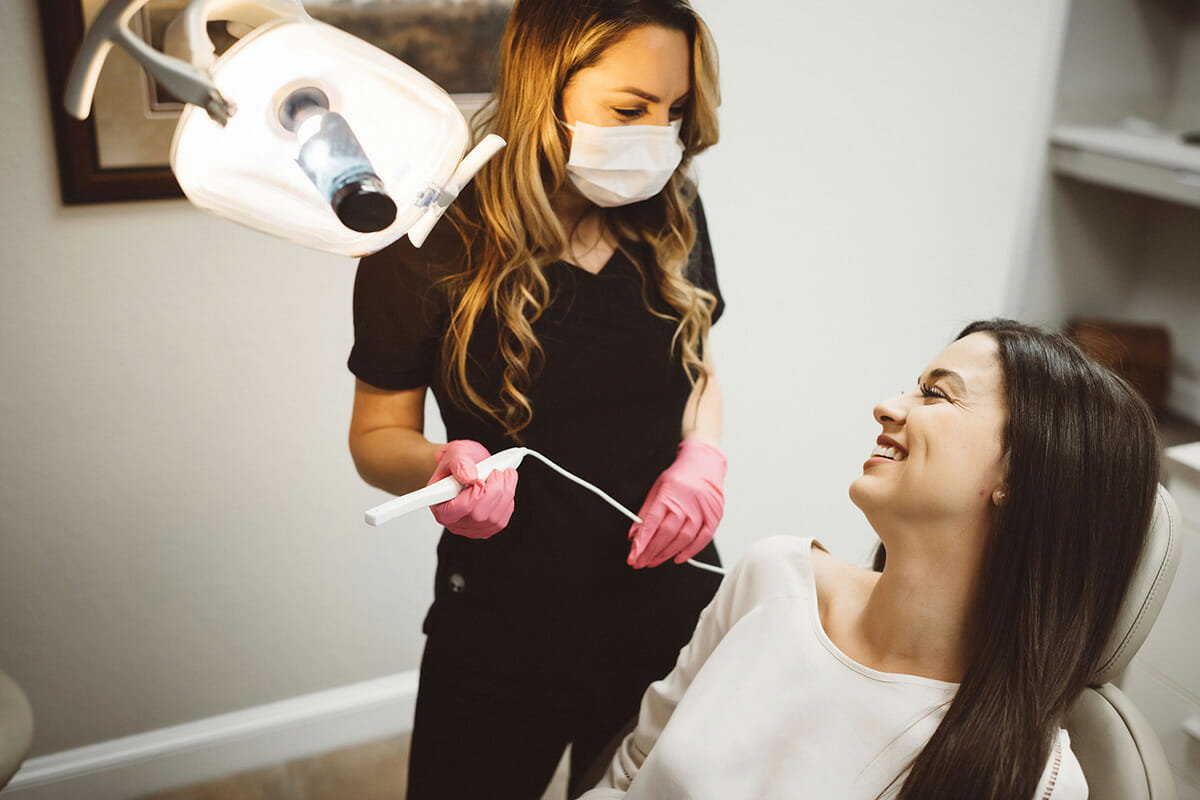Inlays and Onlays
 Restorative dentistry is all about finding the right fit for each patient. At Crosby Dentistry, we are happy to explore several options to find the best procedure to restore a healthy smile. Inlays and onlays offer a fantastic alternative that lives somewhere between a dental filling and a new crown.
Restorative dentistry is all about finding the right fit for each patient. At Crosby Dentistry, we are happy to explore several options to find the best procedure to restore a healthy smile. Inlays and onlays offer a fantastic alternative that lives somewhere between a dental filling and a new crown.
What Is an Inlay?
When decay or infection causes a cavity to form in the tooth, a dental filling is usually the best option to remove the infection and fill the void. However, sometimes the cavity in the tooth is too large to use a traditional filling. Instead of extracting the tooth entirely, an inlay can provide a suitable alternative. An inlay is made of porcelain that looks and feels like a natural tooth. The porcelain is molded and placed inside the tooth’s cavity, filling the void while still retaining the majority of the natural tooth. Inlays are used to fix cavities in teeth when a traditional dental filling would be too small.
What Is an Onlay?
Comparatively, an onlay is used to help fill the cavity inside the tooth and work to cover areas on the cusps, or surface, of the tooth. Onlays tend to be larger than an inlay but not quite as large as a crown. An onlay is made of resin by taking a mold of the damaged tooth. The onlay is made to look and feel just like a natural tooth, so it will seamlessly blend into your smile.
What Does an Inlay or Onlay Procedure Involve?
Using inlays and onlays is a straightforward procedure that can usually be completed in just two dental appointments. During the first appointment, Dr. Crosby will remove the infection or decay from the affected tooth. Then, a simple mold will be created using soft wax. A temporary filling will be applied to the tooth to protect the void until your inlay or onlay is made. The mold is sent to a laboratory, where a professional will work to create a customized finished product.
Once the final inlay or onlay is created and sent back to our office, you will have a second appointment with Dr. Crosby. At this appointment, the temporary filling will be removed and replaced with the permanent inlay or onlay. The dentist will work to blend the new fixture into your natural smile, making minor adjustments to ensure it fits just perfectly. The dentist will also ensure that there is plenty of room between your teeth to allow for flossing and that your bite pattern remains even and comfortable. Fitting your new inlay or onlay will take only a short amount of time, but you will be left with a beautiful, fresh new smile.
How Long Do Inlays and Onlays Last?
One of the most attractive benefits of inlays and onlays is their tremendous longevity. Most inlays and onlays can last at least fifteen years, with many lasting thirty years or longer. Of course, taking care of your inlays and onlays is key to getting the most out of them.
As with other restorative dental fixtures, you will want to make sure you keep up with good dental hygiene. Brush your teeth at least twice per day, and floss at least once daily. While inlays and onlays are made of solid materials, you will want to take care not to chip or crack them. Try to avoid eating hard foods like nuts and ice that could inadvertently damage your inlays and onlays. With the right care, you can keep your smile beautiful for years.
Dr. Crosby and the team at Crosby Dentistry want our patients to understand their options for smile restorations and healthy teeth. Reach out to our office to schedule your consultation and allow us to navigate you to the best solution for your smile!
